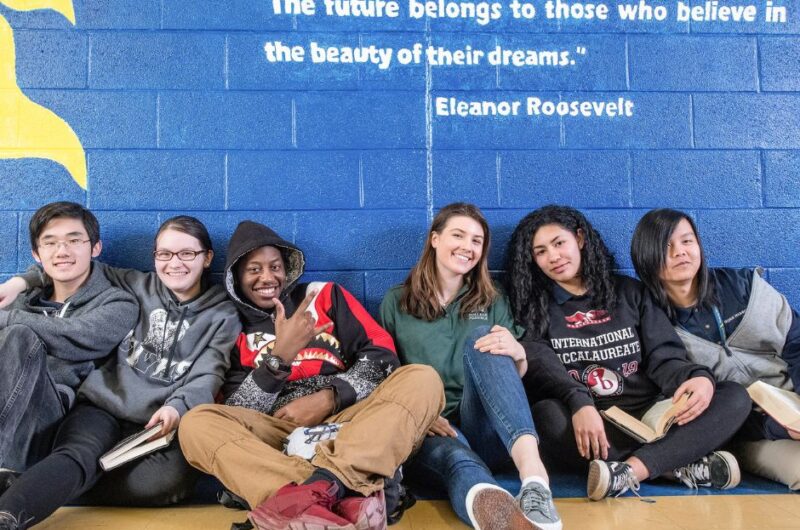At College Possible, October is known as College Knowledge Month. Part of the college exploration process that happens in October for high school seniors is selecting six potential schools to apply to.
Why 6 schools?
College Possible Minnesota asks every high school student we serve to choose six potential schools and apply to a wide range of opportunities. This list is further narrowed down as they approach enrollment season in the spring. The balance in a “Starting Six” list includes two schools to which the student is likely to earn acceptance, two schools that are right on target, and two schools that are more of a reach (or far-reach).
In previous years, coaches were asked to help students select their top five schools. “Expanding from five schools to six schools allows coaches to help encourage students to reach higher goals, while still maintaining those likely and target options” says Senior Program Manager James Corbett. Changes in the admissions process for higher education have made applications more accessible. For example, many schools in Minnesota have opted to make test scores optional. Reciprocity is a great partnership between Minnesota and neighboring states, and an application system like the Common App has allowed students to apply to multiple schools through a single application. “College Possible Minnesota also signed on as an official partner with the Office of Higher Education for direct admissions,” says Senior Program Manager Lindsay. “We are eager to see the effect that has had on application submission.”
Starting the process
Helping students select their top six schools begins with informational sessions for and teaching students the importance of a “Starting Six” list. From there students receive individualized, one-on-one support from their coach but are always the ultimate decision makers. “Ultimately, coaches support students wherever they go,” continues James, “but that also doesn’t mean that they won’t challenge students to maximize their options and potential with probing questions.”
Helping students craft personal statements
In addition to supporting students as they select their top six schools, coaches often proofread application personal statements. Coaches receive training from staff on how best to assist with personal statements. Students receive support through informational-based sessions, and then more hands-on support through one-on-one conversation, as well as through drop in office-hours. College Possible also utilizes a web-based program that guides students through creating their own personal statement.
“Every student is encouraged to have a personal statement by the start of their senior year,” continues Lindsay. “Even if the colleges they are applying to do not require them, there may be a scholarship application that does so we want them to be as prepared as possible.”



